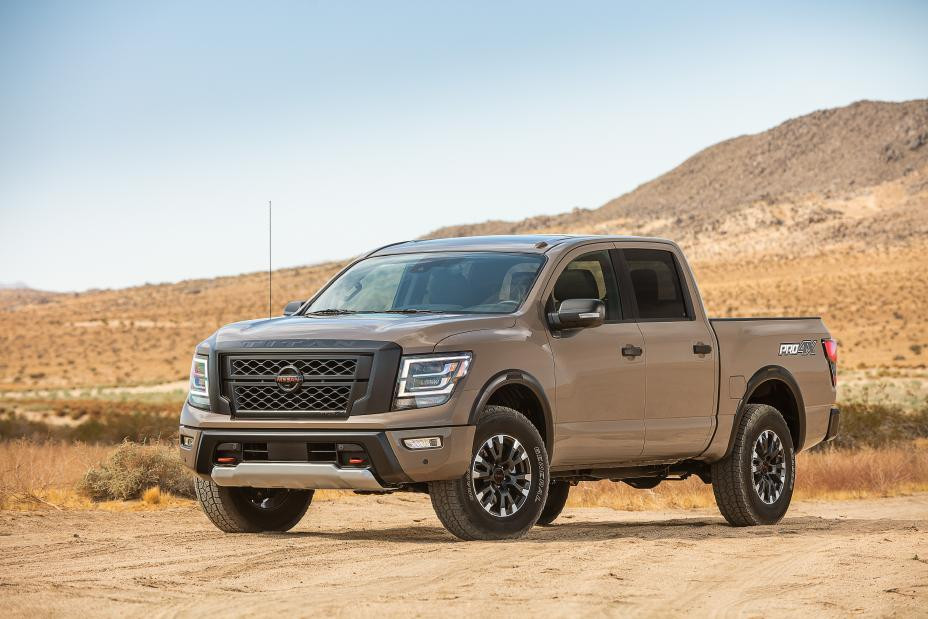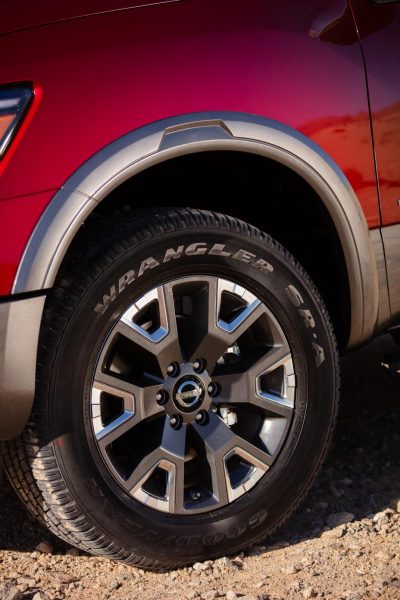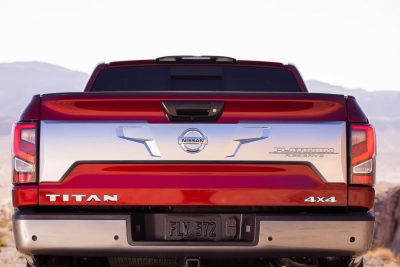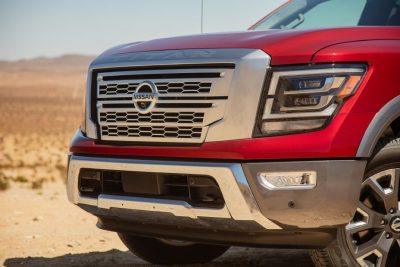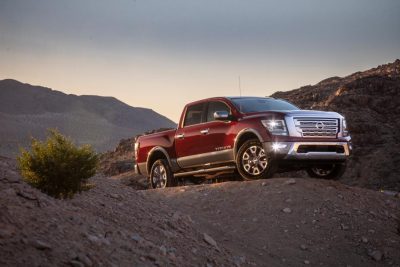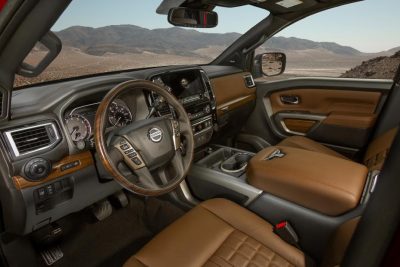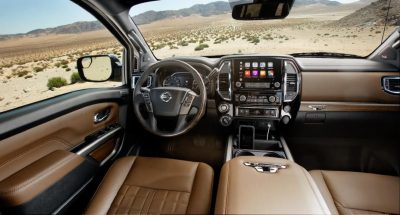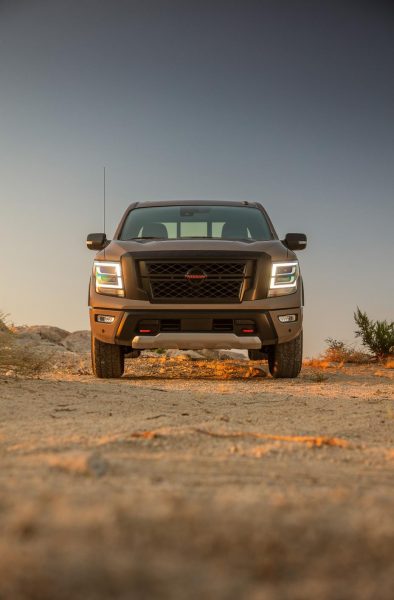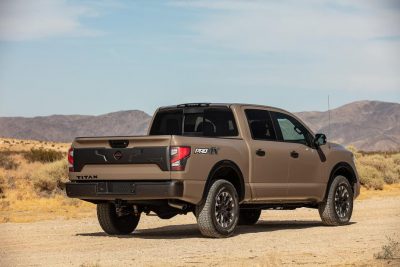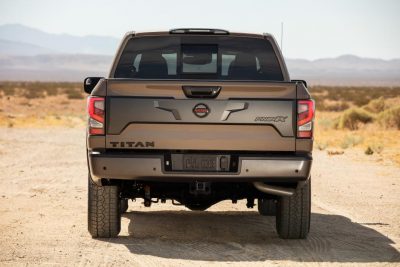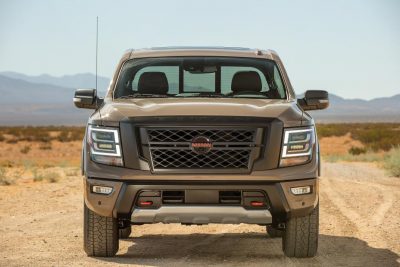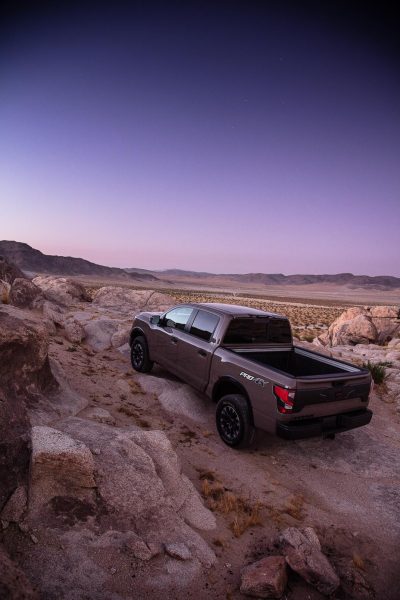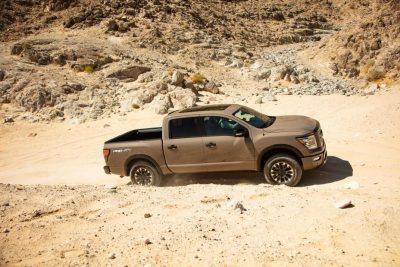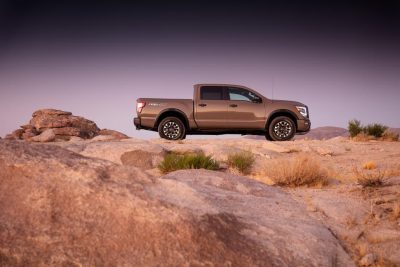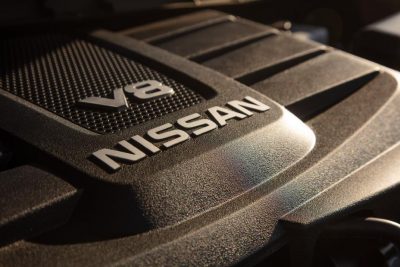Remember the Nissan Titan? If your answer is no, we don’t blame you. Despite making waves when it first appeared several years ago, Nissan’s attempt at usurping the established pickup order has not gone well. The model has suffered from slow sales, with this dire prospect forcing Nissan to recently axe several variants of the Titan recently, including the Cummins powered XD model. But Nissan has not given up, and recently introduced the 2020 Titan at the Texas State Fair. We took some time to formally analyze the current generation Titan, and we were eager to find out if this is indeed the truck that will finally accelerate Nissan’s sales fortunes in this segment.
Looking at the exterior styling, and it’s clear that Nissan designers wanted to bring some attention back onto the truck. The styling here is not an evolution so to speak, but rather is an extensive refresh designed to bring some of the cohesion that was woefully missing in its predecessor. We like the way that the more prominent front grille adds some aggression to the front fascia, with Nissan calling it the “Powerful Warrior” look. Nissan did not denote what kind of warrior the design is supposed to be emulating, but we do like the way the optional LED headlights and the “double boomerang LED running lights mesh together to bring more unity, as well as more substance to the truck. While we think that the Titan still falls just a tad short in besting the Ram 1500 in the aesthetics department, it is a big leap forward over the clunky styling in the current generation Chevrolet Silverado, and it could also give the venerable and also aging Ford F-150 a run for its money before it is heavily revamped for the 2021 model year. With the Titian only being available in two cab styles (King and the bigger Crew cab), it still has a disadvantage over the wider offerings offered by its domestic counterparts, and we are keen to see if Nissan can find ways to still turn the tide and steal valuable sales for itself. All trims benefit from revised tailgate trim and LED headlights, though the headlights only gain LED tech in higher trims, with lower grade Titans making do with traditional halogen units.
The interior of the Titan still retains a lot of the functional yet sensible styling that originally defined its predecessors. Yes, it is still a step or two behind rivals, but this time Nissan interior designers aimed to improve some of the finer details in an attempt to make up some ground. There are higher quality materials scattered about, and an all new 8.0 inch touchscreen infotainment system makes its debut on the Titan, along with an optional 9.0 inch screen for those that prefer to have a bigger viewing surface to gaze upon. The truck also boasts more interior assist grips, better storage areas, as well as an available panoramic sunroof to help bring in welcome levels of light into the cabin. We also like how there is more distinction and personality in the cabin depending on which trim is equipped, which is an improvement over the previous generation truck. We suspect that the Titan will retain the impressive levels of head and legroom that has proven to be a very potent selling point for the truck since it first made its way to dealerships. While it lacks some of the flash and the massive 12.1 inch touchscreen that helped define the Ram’s recent ascent in sales relevance, the Titan’s simpler yet more functional approach should still appeal to more traditional pickup buyers that want to have a nice place to spend time in, but without going overboard in gadgetry and glitz.
When it comes to performance hardware, Nissan makes it simple for power hungry customers, but is also taking a big gamble by only offering an updated version of its 5.6 liter naturally aspirated V8. While other truck makers have added much smaller displacement turbocharged engines to try and improve their fuel economy targets, Nissan joins Toyota in offering V8 only power following the demise of the fore-mentioned Cummins engine. Despite this, the beefy V8 has been slightly reworked, and now produces 400 horsepower which is better than the Ram’s 5.7 liter Hemi V8, and is just shy of the 6.2 liter V8 used in GM products. This is a slight bump over the 390 horsepower wielded by the outgoing 2019 Titan, with all of this power being routed to either two or all four wheels through an all new nine-speed automatic which replaces the old seven-speed unit. The F-150 and the Silverado may lead the cog count with its 10-speed automatic, the Titan is ahead of the Ram’s eight speed gearbox, and an extra gear is certainly welcome in its attempts to improve fuel economy.
As expected, off-road driving is a key trait of the Titan, and this environment will prove to be the perfect place for the all new Pro-4X model. Once limited to aging and seemingly immortal Frontier, the bigger Titan ditches that model’s fascination of being an exhibit in Jurassic Park, and instead arrives with a massive infusion of modern touches. The exterior styling can be equipped with an all new “hot trim” package that makes the badging, interior trim, and even the seat stitching a vibrant shade of red. The Pro-4X is not a Raptor fighter, but it certainly has the Silverado Trailboss and the Ram Power Wagon in its sights thanks to upgrade Bilstein off-road shocks, an electronic rear locking differential, and meaty off-road tires designed to ensure maximum amounts of grip on a wide variety of terrain. Hill Start Assist and accompanying Hill Descent control help the Pro-4X feel composed and secure over a wide range of obstacles, though we will wait until we have the opportunity to sample it in person to see if it indeed beats the Trailboss that we recently tested in this regard.
Finally Nissan engineers have also made the Titan conform with its corporate siblings in offering higher levels of safety by equipping all models with eight airbags (two more than last year), and Nissan’s Safety Shield 360 suite. This aresenal of features includes forward automatic emergency braking, blind spot monitoring, adaptive cruise control, 360 degree rear view backup camera system, and a traffic sign recgonition system. With this infusion of protective technology, it’s clear that the Titan aims to be one of the safest trucks in the segment, while also being a major improvement over the prior model in terms of technology, design, and capability. As for the question of whether it finally has what it takes to stand out from the Ford F-150, Ram 1500, and the Chevrolet Silverado? Only time will tell if the truck will succeed in its mission or not, especially considering that it still does not quite matchup with some of its peers in packaging and performance equipment. But if Nissan can focus on showing customers some of the finer things that lurk beneath the Titan’s tweaked skin, then it might be able to attract more buyers to the nameplate, and perhaps even a few that would have otherwise purchased a rig from Ford, Ram, and Chevrolet.

Carl Malek has been an automotive journalist for over 10 years. First starting out as a freelance photographer before making the transition to writing during college, his work has appeared on numerous automotive forums as well as websites such as Autoshopper.com.
Carl is also a big fan of British vehicles with the bulk of his devotion going to the Morgan Motor Company as well as offerings from Lotus, MG, and Caterham. When he is not writing about automobiles, Carl enjoys spending time with his family and friends in the Metro Detroit area, as well as spending time with his adorable pets.

